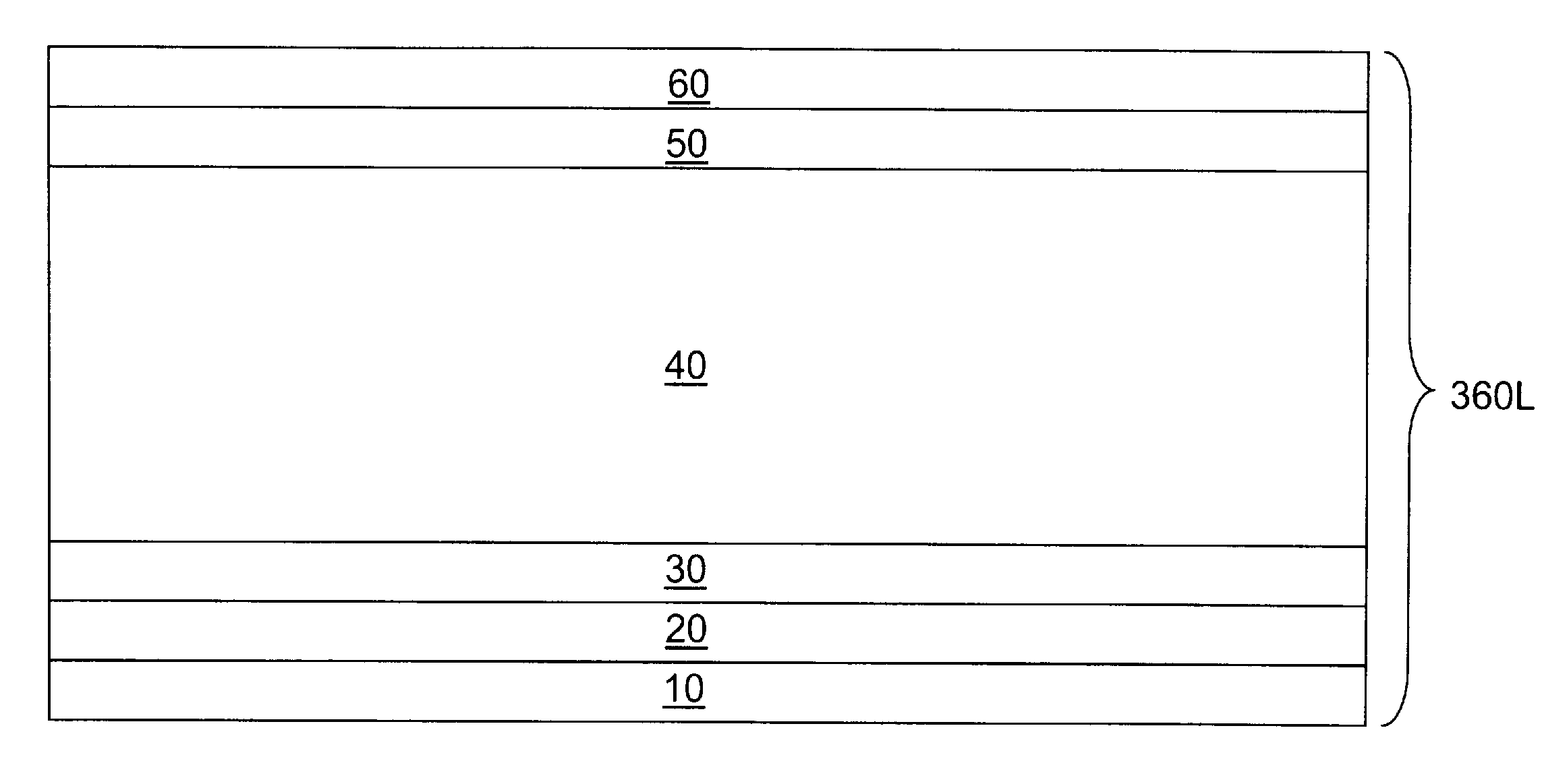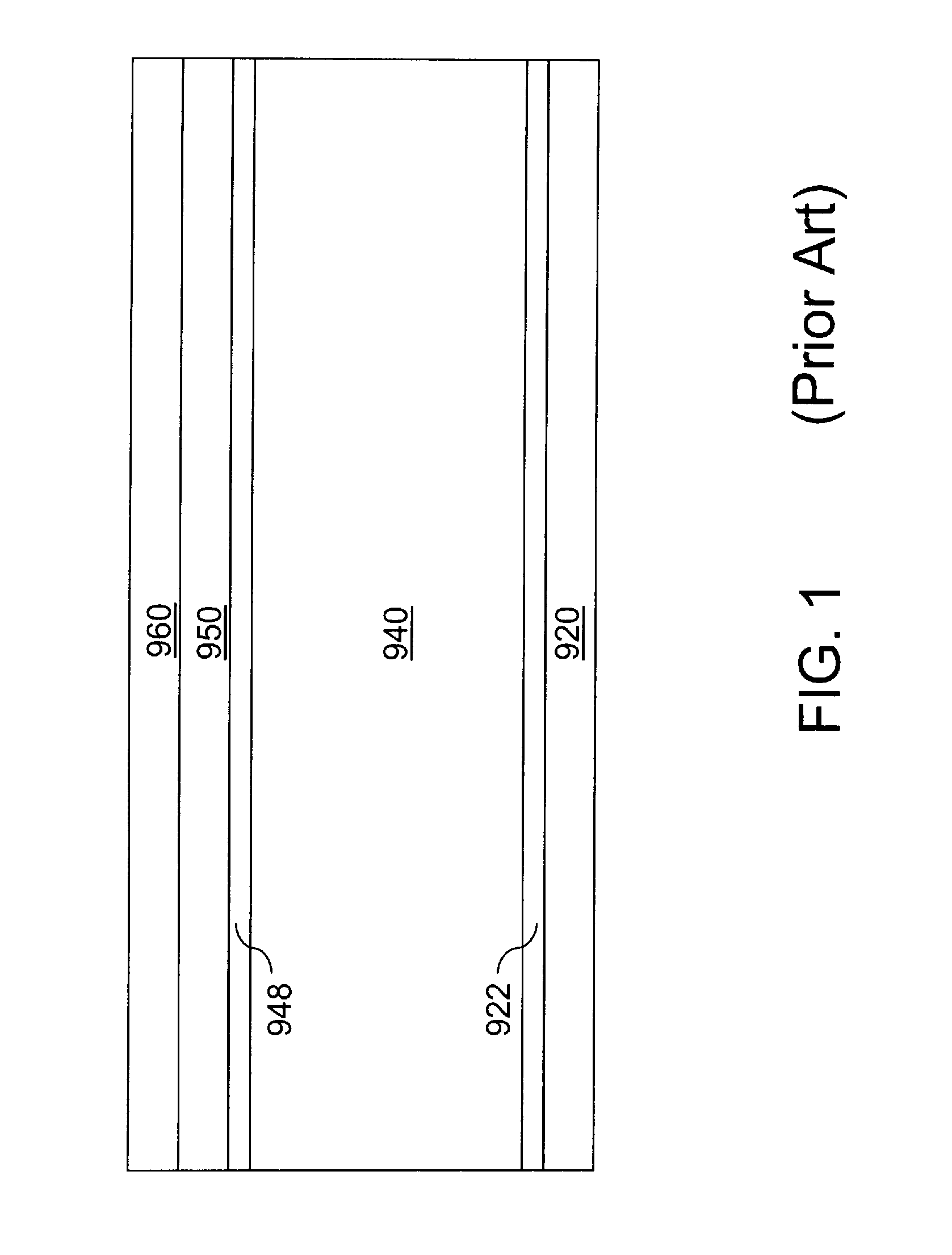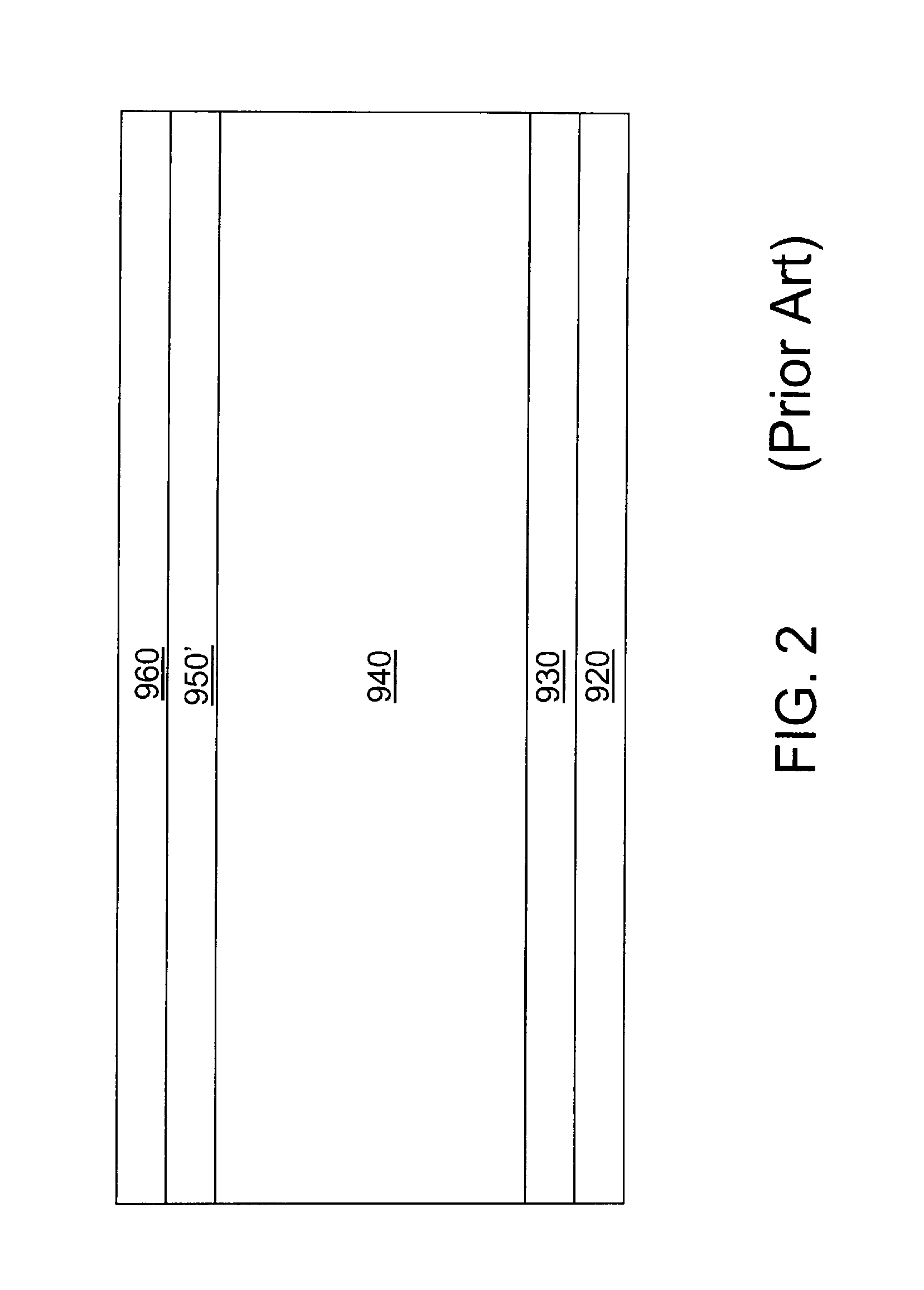Tungsten liner for aluminum-based electromigration resistant interconnect structure
a technology of aluminum-based electromigration resistance and interconnect structure, which is applied in the direction of semiconductor devices, semiconductor/solid-state device details, electrical apparatus, etc., can solve the problems of metal line or metal via no longer providing a conductive path in the metal interconnect, metal ions to dislodge from the lattice and move physically, and product failure of semiconductor devices, etc., to achieve the effect of enhancing electromigration resistan
- Summary
- Abstract
- Description
- Claims
- Application Information
AI Technical Summary
Benefits of technology
Problems solved by technology
Method used
Image
Examples
first embodiment
[0051]Four embodiments are provided for the structure of the metallic stack 360L according to the present invention. Referring to FIG. 5, a first exemplary structure for the metallic stack 360L is shown according to the present invention. The first exemplary structure for the metallic stack 360L comprises, from bottom to top, a low-oxygen-reactivity metal layer 10, a bottom transition metal layer 20, a transition metal nitride layer 30, an aluminum-copper layer 40, a top transition metal layer 50, and a top transition metal nitride layer 60. The bottom transition metal layer 20 is formed directly on the low-oxygen-reactivity metal layer 10, and vertically abuts the low-oxygen-reactivity metal layer 10. The bottom transition metal nitride layer 30 is formed directly on the bottom transition metal layer 20, and vertically abuts the bottom transition metal layer 20. The aluminum-copper layer 40 is formed directly on the bottom transition metal nitride layer 30, and vertically abuts the...
second embodiment
[0068]Referring to FIG. 6, a second exemplary structure for the metallic stack 360L is shown according to the present invention. The second exemplary structure for the metallic stack 360L may be incorporated into the exemplary metal interconnect structure of FIG. 4 instead of the first exemplary structure for the metallic stack 360L. The second exemplary structure for the metallic stack 360L comprises, from bottom to top, a low-oxygen-reactivity metal layer 10, a bottom transition metal layer 20, a transition metal nitride layer 30, an aluminum-copper layer 40, and a top transition metal nitride layer 60.
[0069]The structure, composition, and method of manufacture of each of the layers comprising the second exemplary structure for the metallic stack 360L are the same as in the first embodiment. Specifically, the second exemplary structure for the metallic stack 360L according to the second embodiment of the present invention may be derived from the first exemplary structure for the m...
third embodiment
[0070]Referring to FIG. 7, a third exemplary structure for the metallic stack 360L is shown according to the present invention. The third exemplary structure for the metallic stack 360L may be incorporated into the exemplary metal interconnect structure of FIG. 4 instead of the first exemplary structure for the metallic stack 360L. The second exemplary structure for the metallic stack 360L comprises, from bottom to top, a bottommost transition metal nitride layer 8, a low-oxygen-reactivity metal layer 10′, a bottom transition metal layer 20, a transition metal nitride layer 30, an aluminum-copper layer 40, a top transition metal layer 50, and a top transition metal nitride layer 60.
[0071]The structure, composition, and method of manufacture of each of the bottom transition metal layer 20, the transition metal nitride layer 30, the aluminum-copper layer 40, and the top transition metal nitride layer 60 are the same as in the first embodiment. Specifically, the third exemplary structu...
PUM
| Property | Measurement | Unit |
|---|---|---|
| thickness | aaaaa | aaaaa |
| dielectric constant | aaaaa | aaaaa |
| dielectric constant | aaaaa | aaaaa |
Abstract
Description
Claims
Application Information
 Login to View More
Login to View More - R&D
- Intellectual Property
- Life Sciences
- Materials
- Tech Scout
- Unparalleled Data Quality
- Higher Quality Content
- 60% Fewer Hallucinations
Browse by: Latest US Patents, China's latest patents, Technical Efficacy Thesaurus, Application Domain, Technology Topic, Popular Technical Reports.
© 2025 PatSnap. All rights reserved.Legal|Privacy policy|Modern Slavery Act Transparency Statement|Sitemap|About US| Contact US: help@patsnap.com



